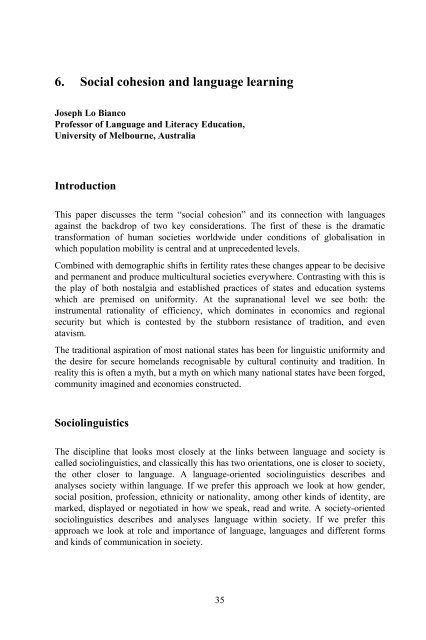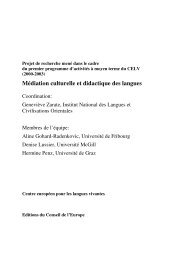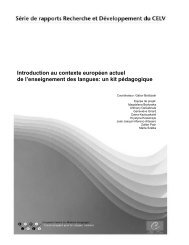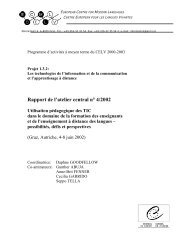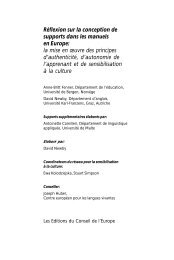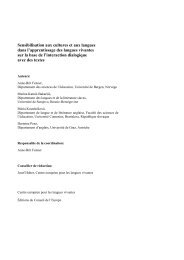cohesion - European Centre for Modern Languages
cohesion - European Centre for Modern Languages
cohesion - European Centre for Modern Languages
Create successful ePaper yourself
Turn your PDF publications into a flip-book with our unique Google optimized e-Paper software.
6. Social <strong>cohesion</strong> and language learning<br />
Joseph Lo Bianco<br />
Professor of Language and Literacy Education,<br />
University of Melbourne, Australia<br />
Introduction<br />
This paper discusses the term “social <strong>cohesion</strong>” and its connection with languages<br />
against the backdrop of two key considerations. The first of these is the dramatic<br />
trans<strong>for</strong>mation of human societies worldwide under conditions of globalisation in<br />
which population mobility is central and at unprecedented levels.<br />
Combined with demographic shifts in fertility rates these changes appear to be decisive<br />
and permanent and produce multicultural societies everywhere. Contrasting with this is<br />
the play of both nostalgia and established practices of states and education systems<br />
which are premised on uni<strong>for</strong>mity. At the supranational level we see both: the<br />
instrumental rationality of efficiency, which dominates in economics and regional<br />
security but which is contested by the stubborn resistance of tradition, and even<br />
atavism.<br />
The traditional aspiration of most national states has been <strong>for</strong> linguistic uni<strong>for</strong>mity and<br />
the desire <strong>for</strong> secure homelands recognisable by cultural continuity and tradition. In<br />
reality this is often a myth, but a myth on which many national states have been <strong>for</strong>ged,<br />
community imagined and economies constructed.<br />
Sociolinguistics<br />
The discipline that looks most closely at the links between language and society is<br />
called sociolinguistics, and classically this has two orientations, one is closer to society,<br />
the other closer to language. A language-oriented sociolinguistics describes and<br />
analyses society within language. If we prefer this approach we look at how gender,<br />
social position, profession, ethnicity or nationality, among other kinds of identity, are<br />
marked, displayed or negotiated in how we speak, read and write. A society-oriented<br />
sociolinguistics describes and analyses language within society. If we prefer this<br />
approach we look at role and importance of language, languages and different <strong>for</strong>ms<br />
and kinds of communication in society.<br />
35


